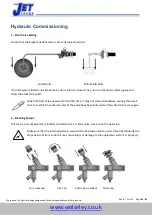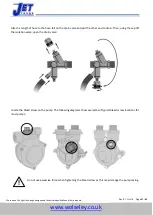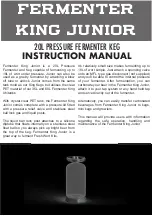
We reserve the right to change designs and technical specifications of our products
.
Rev 8.1 Oct-15 Page
27
/
42
Maintenance
Due to variations in operating conditions, and the varying loads placed on pressurisation units, it is not feasible
to provide accurate predictions of component lifespan. The most effective method of maintenance is to inspect
the pressurisation unit for early signs of component failure and take action accordingly.
The following maintenance procedures should be performed at least once a year:
Visual Inspection
A basic visual inspection will highlight the majority of potential faults on a pressurisation unit. It is
recommended to perform a visual inspection annually. However, due to the simplicity of performing these
checks, frequent inspections are encouraged.
Check the digital display for fault codes
Check for signs of leakage (e.g. water, mineral deposits, corroded components/cabinet)
Check the break tank overflow for signs of water discharge
Check flexible hoses for signs of degradation (e.g. cracks)
Check that the pressure reading on the digital display corresponds to the actual system pressure (read
off another gauge)
Interrogate Controller
The digital controller keeps a log of the number of pump starts and total hours run for each pump, as well as the
number of alarm activations and power interruptions. It is advisable to take a note of these figures when
servicing the unit, as they may be helpful in diagnosing potential issues. Fields are provided in the service log for
these figures.
It is advisable to scroll through all the settings (including engineers setting) and check them against the figures
on the commissioning report. If there are any discrepancies, check first with on-site staff to see if the changes
are deliberate. If not, reconfigure appropriately.
If settings are persistently becoming corrupted, a power filter may be required. Please refer to the
Installation section of this manual for more information.
Test Unit Operation
The best way to test the operation of the pressurisation unit is to drain water from the system, allowing the
pressure to drop slowly. Once the pressure falls below the pump cut-in pressure ([COLD FILL] – [DIFFERENTIAL])
the pump should start. As soon as the pump starts, close the drain point and allow the system pressure to rise.
Once the [COLD FILL] pressure is reached, the pump should stop.
If the unit is a twin pump model, this test should be repeated until both pumps have run and successfully re-
pressurised the system.
















































